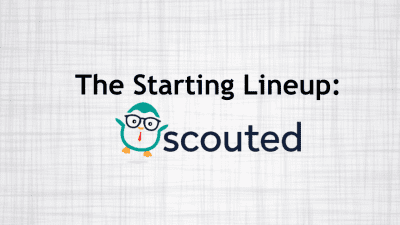These days, written communication skills aren’t just for novelists or content marketers. Almost every company will, at the very least, require their employees to communicate by email if not be able to create much higher profile written pieces. That being that case, candidates are starting to see “written communication skills” bulleted on almost any job requirement list. If that makes you sweat a little, we’re here to help. Here are a few tips we’ve rounded up to help our candidates take their written communication skills to the next level.
Know your reader
Whether you’re just looking to up your blogging skills or trying to land a job as a copywriter, you’re going to need to know who you’re writing to. New writers, when asked about their ideal audience, often respond with, “What I write is relevant to everybody!” Even if your topic of choice is, say, global warming, which you believe affects everybody, your writing won’t be nearly as effective as if you did you research to find out who is typically the most interested in learning about global warming.
Also on Mediabistro


So whether you’re trying to learn how to write the best landing pages or simply start a blog to show off some of your creative writing skills, determining your ideal audience is a must. The best way to do this is to picture yourself writing to one, specific individual when writing your copy. That way, your audience will be clear and it’ll be easier for you to be consistent as the writer.
To figure out who your reader persona is, try asking yourself these questions:
- What is the age and gender of my target persona?
- What does my persona do for a living?
- Is my persona married or single? Do they have kids?
- Where is my persona in their career?
- Where does my persona hope to be someday?
- What are some challenges my persona faces?
- What does my persona like to do in their free time?
You might even want to come up with a name for your target persona and find a stock photo of what you imagine they’d look like. And you don’t just have to stick to one personal for all of your writing. Different projects or different blog posts may be written for different people. Try creating more than one persona to see which audience is more receptive to your writing!
Define your tone and voice
Of course, once you’ve determined your target persona, you’re going to want to figure out what tone and voice speaks to them the best. To do this, you’ll want to do some research on what kinds of writing perform well when targeted at your ideal persona. Neville of Kopywritingkourse.com suggests strolling through Amazon to take a look at the top selling books in your industry. What tone of voice are they using? Professional or friendly? Serious or goofy?
By the way, you might be wondering the difference between voice and tone? Here are some guidelines:
Tone: the attitude that you feel or want to convey when writing.
Voice: the personality of the writer.
Now, if you’re writing for a company, they may have a target persona already in mind and they might even have their preferred tone and voice already laid out. Great! If so, it’s time to get practicing writing to that ideal person.
If you’re left to come if with the tone and voice yourself, check out this list of 155 Words To Describe An Author’s Tone. Try to pick about 3 that would relate to your target persona and write them down! Repeat them to yourself before you start writing a new piece and eventually you’ll see your tone consistently across your writing pieces!
[sc name=“Newsletter”]
Always provide value
Whether you’re writing blogs or marketing emails, your readers are always going to be more interested if there’s something in it for them. Face it, we don’t read blogs or open emails because we care about who sent them. Unless it’s a forwarded email from your grandma that you know she’ll ask about next time you see her…
Even if your end goal is to make a sale or gain a lead, always provide something of value for free. Do some research and include some information that might help your reader with his or her business. Maybe you can identify a problem your persona usually has with his or her hobby. Try tackling that in your next blog post. Trust us. If your readers see that you’re willing to give away value for free, they’ll be way more likely to believe that the stuff you actually sell is even more valuable.
Good grammar isn’t always good
For those who are new to writing, you might feel extremely uncomfortable straying away from the grammar you learned in grade school and the APA format you killed yourself over in college. Of course, your style of writing will always depend on your audience, industry, and even the specific piece/project you’re working on. But more often than not, a conversational tone will be what keeps people eyes on the page rather than clicking on the ad for Johnston & Murphy’s in your sidebar.
You may or may not have noticed the grammar mistake at the beginning of this blog post: “Whether you’re just looking to up your blogging skills or trying to land a job as a copywriter, you’re going to need to know who you’re writing to.” If this hurt to read because you know the proper way to write this phrase would be “…know to whom you write.” then you’re going to have to practice breaking some rules. In the off chance that you’re writing a textbook or user manual, by all means, use the word “whom” and all other proper grammar phrases to your heart’s content. But if you’re looking to make a connection with your reader and write in a conversational tone, you’re going to have to practice just that, writing conversationally.
Of course, writing conversationally doesn’t simply mean writing the way you talk. If you were to record yourself talking about the best pizza in the world and then hoped to use it on your foodie blog, your readers would be pretty confused and lost when reading it. But there is a happy medium when using proper grammar and the way we talk. When writing, it’s a great idea to picture yourself as acquaintances with your target persona. Say your friend of a friend asked you a question about something you’re an expert on and you’re writing a response to them. Write to your acquaintance in a way that’s helpful and informative, but, of course, friendly. The reason we’re not pretending we’re writing to a close friend is because that email would probably be a tad too informal. Writing to an acquaintance will be our happy middle ground.
So instead of writing to our ideal persona like:
“Hello John,
It would please me greatly to educate you on the subject.”
Or writing like,
“Heyooo John!
Wazzuuup! Sure, I’d ❤️ to help u with that.”
We’d recommend writing to our ideal persona something that sounds more like,
“Hi, John!
Thanks for reaching out. I’d love to help!”
Get in the zone
Let’s face it, even the most amazing writers can’t sit down in the same room as their friends, family, and golden retriever and write the best piece ever. Many writers know the environments where they work best and stick to them. Often a completely silent and distraction-free area or a coffee shop paired with your best noise canceling headphones will do the trick to help you block out distraction and allow you to focus on your writing project. Some writers can only write in complete silence whereas others enjoy listening to lyric-free music to help set the tone of their writing. Find what works best for you and repeat the process when you have an important piece to work on!
What are your favorite writing tips? What helps you get in the zone? Comment your favorite writing tips below and share with a friend who still uses “whom” in their emails.




.png)




